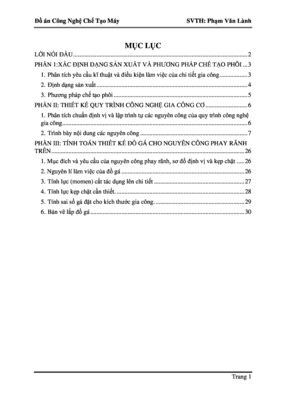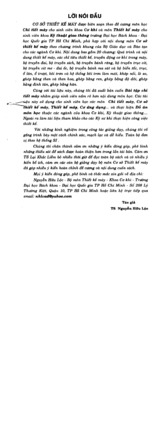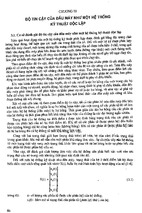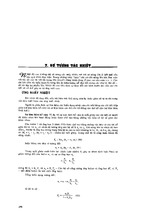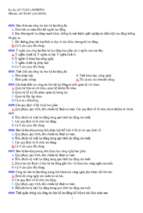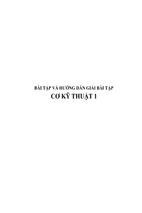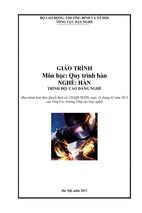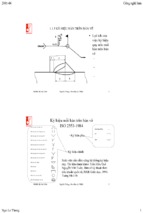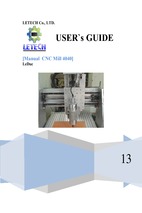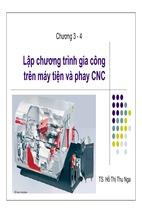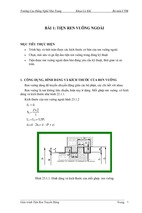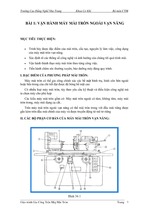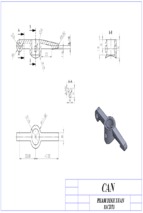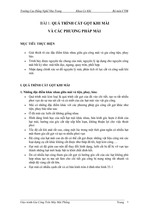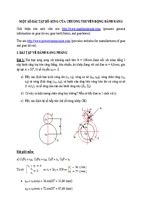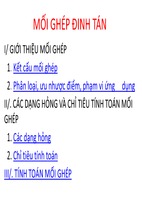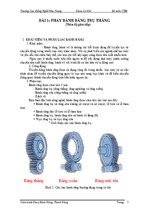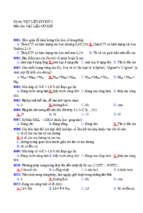Electric Machinery
Sixth Edition
A. E. Fitzgerald
Late Vice President for Academic Affairs
and Dean of the Faculty
Northeastern University
Charles Kingsley, Jr.
Late Associate Professor of Electrical
Engineering, Emeritus
Massachusetts Institute of Technology
Stephen D. Umans
Principal Research Engineer
Department of Electrical Engineering and
Computer Science
Laboratory for Electromagnetic and
Electronic Systems
Massachusetts Institute of Technology
~l~C
3raw
lill
Boston Burr Ridge, IL Dubuque, IA Madison, Wl New York San Francisco St. Louis
Bangkok Bogota Caracas Kuala Lumpur Lisbon London Madrid Mexico City
Milan Montreal New Delhi Santiago Seoul Singapore Sydney Taipei Toronto
McGraw-Hill Higher Education
A Division of The McGraw-Hill Companies
ELECTRIC MACHINERY, SIXTH EDITION
Published by McGraw-Hill, a business unit of The McGraw-Hill Companies, Inc., 1221 Avenue
of the Americas, New York, NY 10020. Copyright (~) 2003, 1990, 1983, 1971, 1961, 1952 by
The McGraw-Hill Companies, Inc. All rights reserved. Copyright renewed 1980 by Rosemary Fitzgerald
and Charles Kingsley, Jr. All rights reserved. No part of this publication may be reproduced or distributed
in any form or by any means, or stored in a database or retrieval system, without the prior written consent
of The McGraw-Hill Companies, Inc., including, but not limited to, in any network or other electronic
storage or transmission, or broadcast for distance learning.
Some ancillaries, including electronic and print components, may not be available to customers outside
the United States.
This book is printed on acid-free paper.
International
Domestic
1 2 3 4 5 6 7 8 9 0 DOC/DOC 0 9 8 7 6 5 4 3 2
1 2 3 4 5 6 7 8 9 0 DOC/DOC 0 9 8 7 6 5 4 3 2
ISBN 0-07-366009-4
ISBN 0-07-112193-5 (ISE)
Publisher: Elizabeth A. Jones
Developmental editor: Michelle L. Flomenhofi
Executive marketing manager: John Wannemacher
Project manager: Rose Koos
Production supervisor: Sherry L. Kane
Media project manager: Jodi K. Banowetz
Senior media technology producer: Phillip Meek
Coordinator of freelance design: Rick D. Noel
Cover designer: Rick D. Noel
Cover image courtesy of: Rockwell Automation~Reliance Electric
Lead photo research coordinator: Carrie K. Burger
Compositor: Interactive Composition Corporation
Typeface: 10/12 Times Roman
Printer: R. R. Donnelley & Sons Company/Crawfordsville, IN
Library of Congress Cataloging-in-Publication Data
Fitzgerald, A. E. (Arthur Eugene), 1909Electric machinery / A. E. Fitzgerald, Charles Kingsley, Jr., Stephen D. Umans. --6th ed.
p.
cm.--(McGraw-Hill series in electrical engineering. Power and energy)
Includes index.
ISBN 0-07-366009-4--ISBN 0-07-112193-5
1. Electric machinery. I. Kingsley, Charles, 1904-. II. Umans, Stephen D. III. Title.
IV. Series.
TK2181 .F5
2003
621.31 f042---dc21
2002070988
CIP
INTERNATIONAL EDITION ISBN 0-07-112193-5
Copyright ~ 2003. Exclusive rights by The McGraw-Hill Companies, Inc., for manufacture and export.
This book cannot be re-exported from the country to which it is sold by McGraw-Hill. The International
Edition is not available in North America.
www.mhhe.com
McGraw.Hill
Series
in E l e c t r i c a l
and Computer
.
Enaineerina
w
. . -
Stephen W. Director, University of Michigan, Ann Arbor, Senior Consulting Editor
Circuits and Systems
Electronics and VLSI Circuits
Communications and Signal Processing
Introductory
Computer Engineering
Power
Control Theory and Robotics
Antennas, Microwaves, and Radar
Electromagnetics
Ronald N. Bracewell, Colin Cherry, James F. Gibbons, Willis W. Harman, Hubert Heffner, Edward W.
Herold, John G. Linvill, Simon Ramo, Ronald A. Rohrer, Anthony E. Siegman, Charles Susskind,
Frederick E. Terman, John G. Truxal, Ernst Weber, and John R. Whinnery, Previous Consulting Editors
This book is dedicated to my mom, Nettie Umans, and my aunt,
Mae Hoffman, and in memory of my dad, Samuel Umans.
ABOUT THE AUTHORS
The late A r t h u r E. Fitzgerald was Vice President for Academic Affairs at Northeastern University, a post to which he was appointed after serving first as Professor
and Chairman of the Electrical Engineering Department, followed by being named
Dean of Faculty. Prior to his time at Northeastern University, Professor Fitzgerald
spent more than 20 years at the Massachusetts Institute of Technology, from which he
received the S.M. and Sc.D., and where he rose to the rank of Professor of Electrical
Engineering. Besides Electric Machinery, Professor Fitzgerald was one of the authors of Basic Electrical Engineering, also published by McGraw-Hill. Throughout
his career, Professor Fitzgerald was at the forefront in the field of long-range power
system planning, working as a consulting engineer in industry both before and after
his academic career. Professor Fitzgerald was a member of several professional societies, including Sigma Xi, Tau Beta Pi, and Eta Kappa Nu, and he was a Fellow of
the IEEE.
The late Charles Kingsley, Jr. was Professor in the Department of Electrical
Engineering and Computer Science at the Massachusetts Institute of Technology,
from which he received the S.B. and S.M. degrees. During his career, he spent time
at General Electric, Boeing, and Dartmouth College. In addition to Electric Machinery, Professor Kingsley was co-author of the textbook Magnetic Circuits and
Transformers. After his retirement, he continued to participate in research activities
at M.I.T. He was an active member and Fellow of the IEEE, as well as its predecessor
society, the American Institute of Electrical Engineers.
Stephen D. Umans is Principal Research Engineer in the Electromechanical
Systems Laboratory and the Department of Electrical Engineering and Computer
Science at the Massachusetts Institute of Technology, from which he received the S.B.,
S.M., E.E., and Sc.D. degrees, all in electrical engineering. His professional interests
include electromechanics, electric machinery, and electric power systems. At MIT,
he has taught a wide range of courses including electromechanics, electromagnetics,
electric power systems, circuit theory, and analog electronics. He is a Fellow of the
IEEE and an active member of the Power Engineering Society.
,PREFACE
he chief objective of Electric Machinery continues to be to build a strong
foundation in the basic principles of electromechanics and electric machinery.
Through all of its editions, the emphasis of Electric Machinery has been
on both physical insight and analytical techniques. Mastery of the material covered
will provide both the basis for understanding many real-world electric-machinery
applications as well as the foundation for proceeding on to more advanced courses in
electric machinery design and control.
Although much of the material from the previous editions has been retained in
this edition, there have been some significant changes. These include:
T
m
A chapter has been added which introduces the basic concepts of power
electronics as applicable to motor drives.
m
Topics related to machine control, which were scattered in various chapters in
the previous edition, have been consolidated in a single chapter on speed and
torque control. In addition, the coverage of this topic has been expanded
significantly and now includes field-oriented control of both synchronous and
induction machines.
m
MATLAB ®1 examples, practice problems, and end-of-chapter problems have
been included in the new edition.
n
The analysis of single-phase induction motors has been expanded to cover the
general case in which the motor is running off both its main winding and its
auxiliary winding (supplied with a series capacitor).
Power electronics are a significant component of many contemporary electricmachine applications. This topic is included in Chapter 10 of this edition of Electric
Machinery in recognition of the fact that many electric-machinery courses now include
a discussion of power electronics and drive systems. However, it must be emphasized
that the single chapter found here is introductory at best. One chapter cannot begin to
do justice to this complex topic any more than a single chapter in a power-electronics
text could adequately introduce the topic of electric machinery.
The approach taken here is to discuss the basic properties of common power electronic components such as diodes, SCRs, MOSFETs, and IGBTs and to introduce
simple models for these components. The chapter then illustrates how these components can be used to achieve two primary functions of power-electronic circuits in
drive applications: rectification (conversion of ac to dc) and inversion (conversion of
dc to ac). Phase-controlled rectification is discussed as a technique for controlling the
dc voltage produced from a fixed ac source. Phase-controlled rectification can be used
i MATLABis a registered trademarkof The MathWorks,Inc.
Preface
to drive dc machines as well as to provide a controllable dc input to inverters in ac
drives. Similarly, techniques for producing stepped and pulse-width-modulated waveforms of variable amplitudes and frequency are discussed. These techniques are at the
heart of variable-speed drive systems which are commonly found in variable-speed
ac drives.
Drive-systems based upon power electronics permit a great deal of flexibility in
the control of electric machines. This is especially true in the case of ac machines
which used to be found almost exclusively in applications where they were supplied
from the fixed-frequency, fixed-voltage power system. Thus, the introduction to power
electronics in Chapter 10 is followed by a chapter on the control of electric machines.
Chapter 11 brings together material that was distributed in various chapters in
the previous edition. It is now divided into three main sections: control of dc motors,
control of synchronous motors, and control of induction motors. A brief fourth section
discusses the control of variable-reluctance motors. Each of these main sections begins
with a disCussion of speed control followed by a discussion of torque control.
Many motor-drive systems are based upon the technique of field-oriented control (also known as vector control). A significant addition to this new edition is the
discussion of field-oriented control which now appears in Chapter 11. This is somewhat advanced material which is not typically found in introductory presentations of
electric machinery. As a result, the chapter is structured so that this material can be
omitted or included at the discretion of the instructor. It first appears in the section on
torque control of synchronous motors, in which the basic equations are derived and
the analogy with the control of dc machines is discussed. It appears again in its most
commonly used form in the section on the torque control of induction motors.
The instructor should note that a complete presentation of field-oriented control
requires the use of the dq0 transformation. This transformation, which appeared
for synchronous machines in Chapter 6 of the previous edition, is now found in
Appendix C of this edition. In addition, the discussion in this appendix has been
expanded to include a derivation of the dq0 transformation for induction machines in
which both stator and rotor quantities must be transformed.
Although very little in the way of sophisticated mathematics is required of the
reader of this book, the mathematics can get somewhat messy and tedious. This is
especially true in the analyis of ac machines in which there is a significant amount
of algebra involving complex numbers. One of the significant positive developments
in the last decade or so is the widespread availability of programs such as MATLAB
which greatly facilitate the solution of such problems. MATLAB is widely used in
many universities and is available in a student version. 2
In recognition of this development, this edition incorporates MATLAB in examples and practice problems as well as in end-of-chapter problems. It should be
emphasized, though, that the use of MATLAB is not in any way a requirement for
the adoption or use of Electric Machinery. Rather, it is an enhancement. The book
2 The MATLABStudent Version is published and distributed by The MathWorks, Inc.
(http://www.mathworks.com).
x|
xii
Preface
now includes interesting examples which would have otherwise been too mathematically tedious. Similarly, there are now end-of-chapter problems which are relatively
straightforward when done with MATLAB but which would be quite impractical if
done by hand. Note that each MATLAB example and practice problem has been notated with the symbol ~ , found in the margin of the book. End-of-chapter problems
which suggest or require MATLAB are similarly notatated.
It should be emphasized that, in addition to MATLAB, a number of other
numerical-analysis packages, including various spread-sheet packages, are available
which can be used to perform calculations and to plot in a fashion similar to that done
with MATLAB. If MATLAB is not available or is not the package of preference at
your institution, instructors and students are encouraged to select any package with
which they are comfortable. Any package that simplifies complex calculations and
which enables the student to focus on the concepts as opposed to the mathematics
will do just fine.
In addition, it should be noted that even in cases where it is not specifically
suggested, most of the end-of-chapter problems in the book can be worked using
MATLAB or an equivalent program. Thus, students who are comfortable using such
tools should be encouraged to do so to save themselves the need to grind through messy
calculations by hand. This approach is a logical extension to the use of calculators
to facilitate computation. When solving homework problems, the students should
still, of course, be required to show on paper how they formulated their solution,
since it is the formulation of the solution that is key to understanding the material.
However, once a problem is properly formulated, there is typically little additional
to be learned from the number crunching itself. The learning process then continues
with an examination of the results, both in terms of understanding what they mean
with regard to the topic being studied as well as seeing if they make physical sense.
One additional benefit is derived from the introduction of MATLAB into this
edition of Electric Machinery. As readers of previous editions will be aware, the
treatment of single-phase induction motors was never complete in that an analytical
treatment of the general case of a single-phase motor running with both its main and
auxiliary windings excited (with a capacitor in series with the auxiliary winding) was
never considered. In fact, such a treatment of single-phase induction motors is not
found in any other introductory electric-machinery textbook of which the author is
aware.
The problem is quite simple: this general treatment is mathematically complex,
requiring the solution of a number of simultaneous, complex algebraic equations.
This, however, is just the sort of problem at which programs such as MATLAB
excel. Thus, this new edition of Electric Machinery includes this general treatment of
single-phase induction machines, complete with a worked out quantitative example
and end-of-chapter problems.
It is highly likely that there is simply too much material in this edition of Electric
Machinery for a single introductory course. However, the material in this edition
has been organized so that instructors can pick and choose material appropriate to the
topics which they wish to cover. As in the fifth edition, the first two chapters introduce
basic concepts of magnetic circuits, magnetic materials, and transformers. The third
Preface
chapter introduces the basic concept of electromechanical energy conversion. The
fourth chapter then provides an overview of and on introduction to the various machine
types. Some instructors choose to omit all or most of the material in Chapter 3 from an
introductory course. This can be done without a significant impact to the understanding
of much of the material in the remainder of the book.
The next five chapters provide a more in-depth discussion of the various machine
types: synchronous machines in Chapter 5, induction machines in Chapter 6, dc
machines in Chapter 7, variable-reluctance machines in Chapter 8, and single/twophase machines in Chapter 9. Since the chapters are pretty much independent (with
the exception of the material in Chapter 9 which builds upon the polyphase-inductionmotor discussion of Chapter 6), the order of these chapters can be changed and/or
an instructor can choose to focus on one or two machine types and not to cover the
material in all five of these chapters.
The introductory power-electronics discussion of Chapter 10 is pretty much
stand-alone. Instructors who wish to introduce this material should be able to do
so at their discretion; there is no need to present it in a course in the order that it is
found in the book. In addition, it is not required for an understanding of the electricmachinery material presented in the book, and instructors who elect to cover this
material in a separate course will not find themselves handicapped in any way by
doing so.
Finally, instructors may wish to select topics from the control material of Chapter
11 rather than include it all. The material on speed control is essentially a relatively
straightforward extension of the material found in earlier chapters on the individual machine types. The material on field-oriented control requires a somewhat more
sophisticated understanding and builds upon the dq0 transformation found in Appendix C. It would certainly be reasonable to omit this material in an introductory
course and to delay it for a more advanced course where sufficient time is available
to devote to it.
McGraw-Hill has set up a website, www.mhhe.com/umans, to support this new
edition of Electric Machinery. The website will include a downloadable version of the
solutions manual (for instructors only) as well as PowerPoint slides of figures from
the book. This being a new feature of Electric Machinery, we are, to a great extent,
starting with a blank slate and will be exploring different options for supplementing
and enhancing the text. For example, in recognition of the fact that instructors are
always looking for new examples and problems, we will set up a mechanism so that
instructors can submit examples and problems for publication on the website (with
credit given to their authors) which then can be shared with other instructors.
We are also considering setting up a section of the website devoted to MATLAB
and other numerical analysis packages. For users of MATLAB, the site might contain
hints and suggestions for applying MATLAB to Electric Machinery as well as perhaps some Simulink ®3 examples for instructors who wish to introduce simulations
into their courses. Similarly, instructors who use packages other than MATLAB might
3 Simulinkis a registered trademark of The MathWorks, Inc.
xiii
xiv
Preface
want to submit their suggestions and experiences to share with other users. In this context, the website would appear again to be an ideal resource for enhancing interaction
between instructors.
Clearly, the website will be a living document which will evolve in response
to input from users. I strongly urge each of you to visit it frequently and to send in
suggestions, problems, and examples, and comments. I fully expect it to become a
valuable resource for users of Electric Machinery around the world.
Professor Kingsley first asked this author to participate in the fourth edition of
Electric Machinery; the professor was actively involved in that edition. He participated
in an advisory capacity for the fifth edition. Unfortunately, Professor Kingsley passed
away since the publication of the fifth edition and did not live to see the start of the
work on this edition. He was a fine gentleman, a valued teacher and friend, and he is
missed.
I wish to thank a number of my colleagues for their insight and helpful discussions during the production of this edition. My friend, Professor Jeffrey Lang, who
also provided invaluable insight and advice in the discussion of variable-reluctance
machines which first appeared in the fifth edition, was extremely helpful in formulating the presentations of power electronics and field-oriented control which appear
in this edition. Similarly, Professor Gerald Wilson, who served as my graduate thesis
advisor, has been a friend and colleague throughout my career and has been a constant
source of valuable advice and insight.
On a more personal note, I would like to express my love for my wife Denise and
our children Dalya and Ari and to thank them for putting up with the many hours of
my otherwise spare time that this edition required. I promised the kids that I would
read the Harry Potter books when work on this edition of Electric Machinery was
completed and I had better get to it! In addition, I would like to recognize my life-long
friend David Gardner who watched the work on this edition with interest but who did
not live to see it completed. A remarkable man, he passed away due to complications
from muscular dystrophy just a short while before the final draft was completed.
Finally, I wish to thank the reviewers who participated in this project and whose
comments and suggestions played a valuable role in the final form of this edition.
These include Professors:
Ravel F. Ammerman, Colorado School of Mines
Juan Carlos Balda, University of Arkansas, Fayetteville
Miroslav Begovic, Georgia Institute of Technology
Prasad Enjeti, Texas A &M University
Vernold K. Feiste, Southern Illinois University
Thomas G. Habetler, Georgia Institute of Technology
Steven Hietpas, South Dakota State University
Heath Hofmann, Pennsylvania State University
Daniel Hutchins, U.S. Naval Academy
Roger King, University of Toledo
Preface
Alexander E. Koutras, California Polytechnic State University, Pomona
Bruno Osorno, California State University, Northridge
Henk Polinder, Delft University of Technology
Gill Richards, Arkansas Tech University
Duane E Rost, Youngstown State University
Melvin Sandler, The Cooper Union
Ali O. Shaban, California Polytechnic State University, San Luis Obispo
Alan Wallace, Oregon State University
I would like to specifically acknowledge Professor Ibrahim Abdel-Moneim AbdelHalim of Zagazig University, whose considerable effort found numerous typos and
numerical errors in the draft document.
Stephen D. Umans
Cambridge, MA
March 5, 2002
xv
BRIEF CONTENTS
Preface
x
1 Magnetic Circuits and Magnetic Materials
2 Transformers
1
57
3 Electromechanical-Energy-ConversionPrinciples
4 Introduction to Rotating Machines
5 Synchronous Machines
173
245
6 Polyphase Induction Machines
7 DCMachines
112
306
357
8 Variable-Reluctance Machines and Stepping Motors
9 Single- and Two-Phase Motors
452
10 Introduction to Power Electronics
11 Speed and Torque Control
407
493
559
Appendix A Three-Phase Circuits
628
Appendix B Voltages, Magnetic Fields, and Inductances
of Distributed AC Windings 644
Appendix C The dq0 Transformation
657
Appendix D Engineering Aspects of Practical Electric Machine
Performance and Operation 668
Appendix E Table of Constants and Conversion
Factors for SI Units 680
Index
vi
681
CONTENTS
Preface x
Chapter 3
1
M a g n e t i c Circuits and M a g n e t i c
Materials 1
ChaDter
1.1
1.2
1.3
1.4
1.5
1.6
Introduction to Magnetic Circuits 2
Flux Linkage, Inductance, and Energy
Properties of Magnetic Materials 19
AC Excitation 23
Permanent Magnets 30
Application of Permanent Magnet
Materials 35
1.7 Summary 42
1.8 Problems 43
2
Transformers
11
Chapter
57
2.1 Introduction to Transformers 57
2.2 No-Load Conditions 60
2.3 Effect of Secondary Current; Ideal
Transformer 64
2.4 Transformer Reactances and Equivalent
Circuits 68
2.5 Engineering Aspects of Transformer
Analysis 73
2.6 Autotransformers; Multiwinding
Transformers 81
2.7 Transformers in Three-Phase Circuits 85
2.8 Voltage and Current Transformers 90
2.9 The Per-Unit System 95
2.10 Summary 103
2.11 Problems 104
ElectromechanicalEnergy-Conversion
Principles 112
3.1
Forces and Torques in Magnetic
Field Systems 113
3.2 Energy Balance 117
3.3 Energy in Singly-Excited Magnetic Field
Systems 119
3.4 Determination of Magnetic Force and Torque
from Energy 123
3.5 Determination of Magnetic Force and Torque
from Coenergy 129
3.6 Multiply-Excited Magnetic Field
Systems 136
3.7 Forces and Torques in Systems with
Permanent Magnets 142
3.8 Dynamic Equations 151
3.9 Analytical Techniques 155
3.10 Summary 158
3.11 Problems 159
Chapter 4
Introduction to Rotating
M a c h i n e s 173
4.1
4.2
4.3
4.4
4.5
4.6
4.7
4.8
4.9
Elementary Concepts 173
Introduction to AC and DC Machines 176
MMF of Distributed Windings 187
Magnetic Fields in Rotating Machinery 197
Rotating MMF Waves in AC Machines 201
Generated Voltage 208
Torque in Nonsalient-Pole Machines 214
Linear Machines 227
Magnetic Saturation 230
VII
viii
Contents
4.10 Leakage Fluxes
233
Chapter 7
4.11 Summary 235
4.12 Problems 237
DC M a c h i n e s
Chapter 5
Synchronous M a c h i n e s
245
5.1
Introduction to Polyphase Synchronous
Machines 245
5.2 Synchronous-Machine Inductances;
Equivalent Circuits 248
5.3 Open- and Short-Circuit Characteristics 256
5.4 Steady-State Power-Angle
Characteristics 266
5.5 Steady-State Operating Characteristics 275
5.6 Effects of Salient Poles; Introduction to
Direct- and Quadrature-Axis Theory 281
5.7 Power-Angle Characteristics of Salient-Pole
Machines 289
5.8 Permanent-Magnet AC Motors 293
5.9 Summary 295
5.10 Problems 297
Chapter 6
Polyphase Induclion
M a c h i n e s 306
6.1 Introduction to Polyphase Induction
Machines 306
6.2 Currents and Fluxes in Polyphase Induction
Machines 311
6.3 Induction-Motor Equivalent Circuit 313
6.4 Analysis of the Equivalent Circuit 317
6.5 Torque and Power by Use of Thevenin's
Theorem 322
6.6 Parameter Determination from No-Load and
Blocked-Rotor Tests 330
6.7 Effects of Rotor Resistance; Wound and
Double-Squirrel-Cage Rotors 340
6.8 Summary 347
6.9 Problems 348
357
7.1
7.2
7.3
7.4
Introduction 357
Commutator Action 364
Effect of Armature MMF 367
Analytical Fundamentals: Electric-Circuit
Aspects 370
7.5 Analytical Fundamentals: Magnetic-Circuit
Aspects 374
7.6 Analysis of Steady-State Performance 379
7.7 Permanent-Magnet DC Machines 384
7.8 Commutation and Interpoles 390
7.9 Compensating Windings 393
7.10 Series Universal Motors 395
7.11 Summary 396
7.12 Problems 397
Chapter 8
V a r i a b l e - R e l u c t a n c e M a c h i n e s and
Stepping Motors 407
8.1
8.2
8.3
8.4
8.5
8.6
8.7
Basics of VRM Analysis 408
Practical VRM Configurations 415
Current Waveforms for Torque Production
Nonlinear Analysis 430
Stepping Motors 437
Summary 446
Problems 448
421
Chapter 9
Single- and Two.Phase Motors
452
9.1 Single-Phase Induction Motors: Qualitative
Examination 452
9.2 Starting and Running Performance of SinglePhase Induction and Synchronous Motors
455
9.3 Revolving-Field Theory of Single-Phase
Induction Motors 463
9.4 Two-Phase Induction Motors 470
Contents
ix
9.5 Summary
488
Appendix B
9.6 Problems
489
Voltages, M a g n e t i c Fields, and
I n d u c t a n c e s of Distributed
AC Windings 644
,
Chapter 1 0
I n t r o d u c t i o n to P o w e r
Electronics
10.l
10.2
10.3
10.4
10.5
10.6
B.1 Generated Voltages
493
Power Switches 494
Rectification: Conversion of AC to DC 507
Inversion: Conversion of DC to AC 538
Summary 550
Bibliography 552
Problems 552
Chapter 1 1
Speed and Torque Control
11.1
11.2
11.3
11.4
11.5
11.6
11.7
,
559
Control of DC Motors 559
Control of Synchronous Motors 578
Control of Induction Motors 595
Control of Variable-Reluctance Motors
Summary 616
Bibliography 618
Problems 618
APPendix A
T h r e e . P h a s e Circuits
,
644
B.2 Armature MMF Waves 650
B.3 Air-Gap Inductances of Distributed
Windings 653
Appendix C
,
,
The dqO Transformation
657
C.1 Transformation to Direct- and Quadrature-Axis
Variables 657
C.2 Basic Synchronous-Machine Relations in dq0
Variables 660
C.3 Basic Induction-Machine Relations in dq0
Variables 664
Appendix D
,
613
,
628
A.1 Generation of Three-Phase Voltages 628
A.2 Three-Phase Voltages, Currents, and
Power 631
A.3 Y- and A-Connected Circuits 635
A.4 Analysis of Balanced Three-Phase Circuits;
Single-Line Diagrams 641
A.5 Other Polyphase Systems 643
,
Engineering A s p e c t s of Practical
Electric M a c h i n e P e r f o r m a n c e
and Operation 668
D.I
D.2
D.3
D.4
D.5
Losses 668
Rating and Heating 670
Cooling Means for Electric Machines 674
Excitation 676
Energy Efficiency of Electric Machinery 678
ADDendix E
,
,
Table of Constants and Conversion
Factors for Sl Units 680
Index
681
Magnetic Circuits and
Magnetic Materials
he objective of this book is to study the devices used in the interconversion
of electric and mechanical energy. Emphasis is placed on electromagnetic
rotating machinery, by means of which the bulk of this energy conversion
takes place. However, the techniques developed are generally applicable to a wide
range of additional devices including linear machines, actuators, and sensors.
Although not an electromechanical-energy-conversion device, the transformer is
an important component of the overall energy-conversion process and is discussed in
Chapter 2. The techniques developed for transformer analysis form the basis for the
ensuing discussion of electric machinery.
Practically all transformers and electric machinery use ferro-magnetic material
for shaping and directing the magnetic fields which act as the medium for transferring and converting energy. Permanent-magnet materials are also widely used. Without these materials, practical implementations of most familiar electromechanicalenergy-conversion devices would not be possible. The ability to analyze and describe
systems containing these materials is essential for designing and understanding these
devices.
This chapter will develop some basic tools for the analysis of magnetic field
systems and will provide a brief introduction to the properties of practical magnetic
materials. In Chapter 2, these results will then be applied to the analysis of transformers. In later chapters they will be used in the analysis of rotating machinery.
In this book it is assumed that the reader has basic knowledge of magnetic
and electric field theory such as given in a basic physics course for engineering
students. Some readers may have had a course on electromagnetic field theory based
on Maxwell's equations, but an in-depth understanding of Maxwell's equations is
not a prerequisite for study of this book. The techniques of magnetic-circuit analysis,
which represent algebraic approximations to exact field-theory solutions, are widely
used in the study of electromechanical-energy-conversion devices and form the basis
for most of the analyses presented here.
T
2
CHAPTER 1
1.1
Magnetic Circuits and Magnetic Materials
INTRODUCTION
TO MAGNETIC CIRCUITS
The complete, detailed solution for magnetic fields in most situations of practical
engineering interest involves the solution of Maxwell's equations along with various
constitutive relationships which describe material properties. Although in practice
exact solutions are often unattainable, various simplifying assumptions permit the
attainment of useful engineering solutions. 1
We begin with the assumption that, for the systems treated in this book, the frequencies and sizes involved are such that the displacement-current term in Maxwell's
equations can be neglected. This term accounts for magnetic fields being produced
in space by time-varying electric fields and is associated with electromagnetic radiation. Neglecting this term results in the magneto-quasistatic form of the relevant
Maxwell's equations which relate magnetic fields to the currents which produce
them.
I B . da - 0
(1.2)
Equation 1.1 states that the line integral of the tangential component of the
magnetic field intensity H around a closed contour C is equal to the total current
passing through any surface S linking that contour. From Eq. 1.1 we see that the source
of H is the current density J. Equation 1.2 states that the magnetic flux density B is
conserved, i.e., that no net flux enters or leaves a closed surface (this is equivalent to
saying that there exist no monopole charge sources of magnetic fields). From these
equations we see that the magnetic field quantities can be determined solely from the
instantaneous values of the source currents and that time variations of the magnetic
fields follow directly from time variations of the sources.
A second simplifying assumption involves the concept of the magnetic circuit. The general solution for the magnetic field intensity H and the magnetic flux
density B in a structure of complex geometry is extremely difficult. However, a
three-dimensional field problem can often be reduced to what is essentially a onedimensional circuit equivalent, yielding solutions of acceptable engineering accuracy.
A magnetic circuit consists of a structure composed for the most part of highpermeability magnetic material. The presence of high-permeability material tends to
cause magnetic flux to be confined to the paths defined by the structure, much as
currents are confined to the conductors of an electric circuit. Use of this concept of
I Although exact analytical solutions cannot be obtained, computer-based numerical solutions (the
finite-element and boundary-element methods form the basis for a number of commercial programs) are
quite common and have become indespensible tools for analysis and design. However, such techniques
are best used to refine analyses based upon analytical techniques such as are found in this book. Their use
contributes little to a fundamental understanding of the principles and basic performance of electric
machines and as a result they will not be discussed in this book.
1,1
Introductionto Magnetic Circuits
Mean core
length lc
Cross-sectional
area Ac
Wit
N1
Magnetic core
permeability/z
Figure 1.1 Simple magnetic circuit.
the magnetic circuit is illustrated in this section and will be seen to apply quite well
to many situations in this book. 2
A simple example of a magnetic circuit is shown in Fig. 1.1. The core is assumed
to be composed of magnetic material whose permeability is much greater than that
of the surrounding air (/z >>/z0). The core is of uniform cross section and is excited
by a winding of N turns carrying a current of i amperes. This winding produces a
magnetic field in the core, as shown in the figure.
Because of the high permeability of the magnetic core, an exact solution would
show that the magnetic flux is confined almost entirely to the core, the field lines
follow the path defined by the core, and the flux density is essentially uniform over a
cross section because the cross-sectional area is uniform. The magnetic field can be
visualized in terms of flux lines which form closed loops interlinked with the winding.
As applied to the magnetic circuit of Fig. 1.1, the source of the magnetic field
in the core is the ampere-turn product N i. In magnetic circuit terminology N i is
the magnetomotive force (mmf) .T" acting on the magnetic circuit. Although Fig. 1.1
shows only a single coil, transformers and most rotating machines have at least two
windings, and N i must be replaced by the algebraic sum of the ampere-turns of all
the windings.
The magnetic flux ¢ crossing a surface S is the surface integral of the normal
component of B; thus
¢ =/IB .da
(1.3)
In SI units, the unit of ¢ is the weber (Wb).
Equation 1.2 states that the net magnetic flux entering or leaving a closed surface
(equal to the surface integral of B over that closed surface) is zero. This is equivalent
to saying that all the flux which enters the surface enclosing a volume must leave
that volume over some other portion of that surface because magnetic flux lines form
closed loops.
2 For a more extensive treatment of magnetic circuits see A. E. Fitzgerald, D. E. Higgenbotham, and
A. Grabel, Basic Electrical Engineering, 5th ed., McGraw-Hill, 1981, chap. 13; also E. E. Staff, M.I.T.,
Magnetic Circuits and Transformers, M.I.T. Press, 1965, chaps. 1 to 3.
8
4
CHAPTER 1
MagneticCircuits and Magnetic Materials
These facts can be used to justify the assumption that the magnetic flux density
is uniform across the cross section of a magnetic circuit such as the core of Fig. 1.1.
In this case Eq. 1.3 reduces to the simple scalar equation
~bc = Bc Ac
(1.4)
where 4)c = flux in core
Bc = flux density in core
Ac = cross-sectional area of core
From Eq. 1.1, the relationship between the mmf acting on a magnetic circuit and
the magnetic field intensity in that circuit is. 3
-- Ni -- / Hdl
(1.5)
The core dimensions are such that the path length of any flux line is close to
the mean core length lc. As a result, the line integral of Eq. 1.5 becomes simply the
scalar product Hclc of the magnitude of H and the mean flux path length Ic. Thus,
the relationship between the mmf and the magnetic field intensity can be written in
magnetic circuit terminology as
= N i -- Hclc
(1.6)
where Hc is average magnitude of H in the core.
The direction of Hc in the core can be found from the right-hand rule, which can
be stated in two equivalent ways. (1) Imagine a current-carrying conductor held in the
right hand with the thumb pointing in the direction of current flow; the fingers then
point in the direction of the magnetic field created by that current. (2) Equivalently, if
the coil in Fig. 1.1 is grasped in the right hand (figuratively speaking) with the fingers
pointing in the direction of the current, the thumb will point in the direction of the
magnetic fields.
The relationship between the magnetic field intensity H and the magnetic flux
density B is a property of the material in which the field exists. It is common to assume
a linear relationship; thus
B = #H
(1.7)
where # is known as the magnetic permeability. In SI units, H is measured in units of
amperes per meter, B is in webers per square meter, also known as teslas (T), and/z
is in webers per ampere-turn-meter, or equivalently henrys per meter. In SI units the
permeability of free space is #0 = 4:r × 10 -7 henrys per meter. The permeability of
linear magnetic material can be expressed in terms of/Zr, its value relative to that of free
space, or # = #r#0. Typical values of/Z r range from 2000 to 80,000 for materials used
3 In general, the mmf drop across any segment of a magnetic circuit can be calculated as f I-Idl over that
portion of the magnetic circuit.
1,1
Introduction to Magnetic Circuits
Mean core
length Ic
+
Air gap,
permeability/x 0,
Area Ag
Wi~
N1
Magnetic core
permeability/z,
Area Ac
Figure 1.2 Magnetic circuit with air gap.
in transformers and rotating machines. The characteristics of ferromagnetic materials
are described in Sections 1.3 and 1.4. For the present we assume that/Zr is a known
constant, although it actually varies appreciably with the magnitude of the magnetic
flux density.
Transformers are wound on closed cores like that of Fig. 1.1. However, energy
conversion devices which incorporate a moving element must have air gaps in their
magnetic circuits. A magnetic circuit with an air gap is shown in Fig. 1.2. When
the air-gap length g is much smaller than the dimensions of the adjacent core faces,
the magnetic flux ~ will follow the path defined by the core and the air gap and the
techniques of magnetic-circuit analysis can be used. If the air-gap length becomes
excessively large, the flux will be observed to "leak out" of the sides of the air gap
and the techniques of magnetic-circuit analysis will no longer be strictly applicable.
Thus, provided the air-gap length g is sufficiently small, the configuration of
Fig. 1.2 can be analyzed as a magnetic circuit with two series components: a magnetic
core of permeability/~, cross-sectional area Ac, and mean length/c, and an air gap
of permeability/z0, cross-sectional area Ag, and length g. In the core the flux density
can be assumed uniform; thus
Bc = m
Ac
(1.8)
~b
Ag
(1.9)
and in the air gap
Bg-
where 4~ = the flux in the magnetic circuit.
Application of Eq. 1.5 to this magnetic circuit yields
jr = Hctc +
Egg
(1.10)
and using the linear B-H relationship of Eq. 1.7 gives
.T'= BClc_}_ Bg g
lZ
lZo
(1.11)
5
- Xem thêm -


